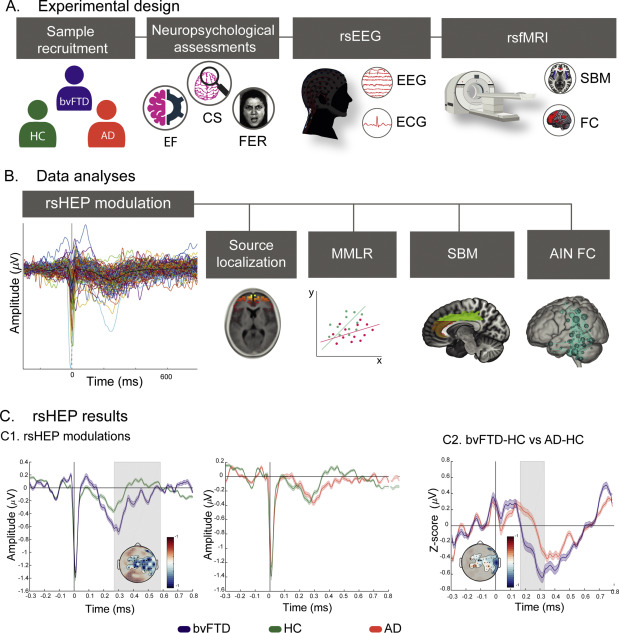08 de Marzo 2022
Abstract:
Background: The predictive coding theory of allostatic interoceptive load states that brain networks mediating autonomic regulation and interoceptive-exteroceptive balance regulate the internal milieu to anticipate future needs and environmental demands. These functions seems to be distinctly compromised in behavioral variant frontotemporal dementia (bvFTD), including alterations of the allostatic-interoceptive network (AIN). Here we hypothesize that bvFTD is typified by an allostatic interoceptive overload.
Methods: We assessed the resting-state heart evoked potential (rsHEP) modulation as well as its behavioral and multimodal neuroimaging correlates in bvFTD patients relative to healthy controls (HCs) and Alzheimer’s disease (AD) patients (N=94). We measured (i) the EEG resting-state heart evoked potential (rsHEP, prompted by visceral inputs and modulated by internal body sensing), (ii) associations between rsHEP and its neural generators (source location), (iii) cognitive disturbances (cognitive state, executive functions, emotion recognition), (iv) brain atrophy, and (v) rsfMRI functional connectivity (AIN vs. control networks).
Results: Relative to HCs and AD patients, bvFTD patients presented more negative rsHEP amplitudes with sources in critical hubs of the AIN (insula, amygdala, somatosensory cortex, hippocampus, anterior cingulate cortex). This exacerbated rsHEP modulation selectively predicted the patients’ cognitive profile (including cognitive decline, executive dysfunction, and emotional impairments). Also, the increased rsHEP modulation in bvFTD was associated with decreased brain volume and connectivity of the AIN. Machine learning results confirmed the AIN specificity in predicting the bvFTD group.
Conclusions: Altogether, these results suggest that bvFTD may be characterized by an allostatic-interoceptive overload manifested in ongoing electrophysiological markers, brain atrophy, functional networks, and cognition.


